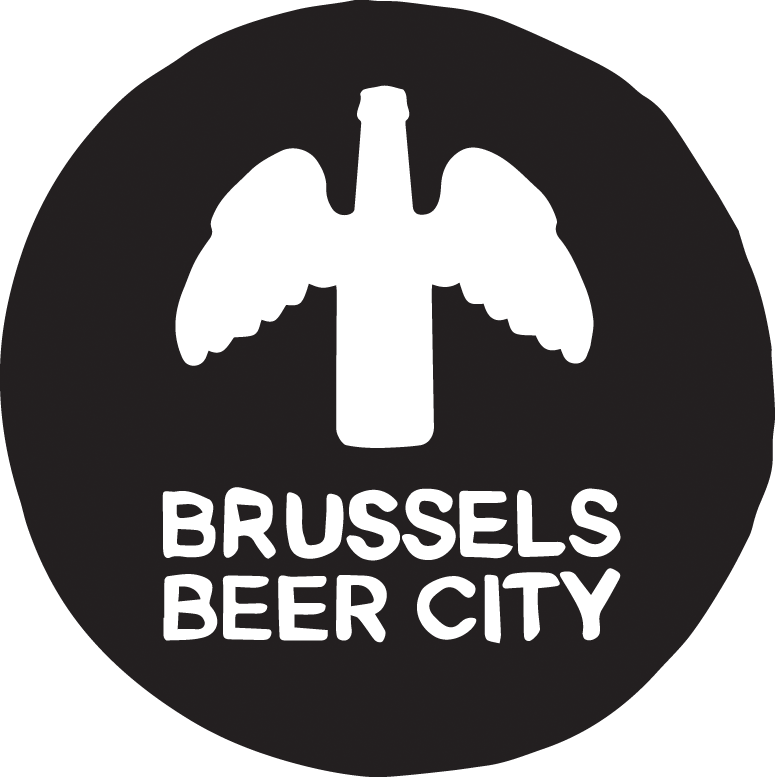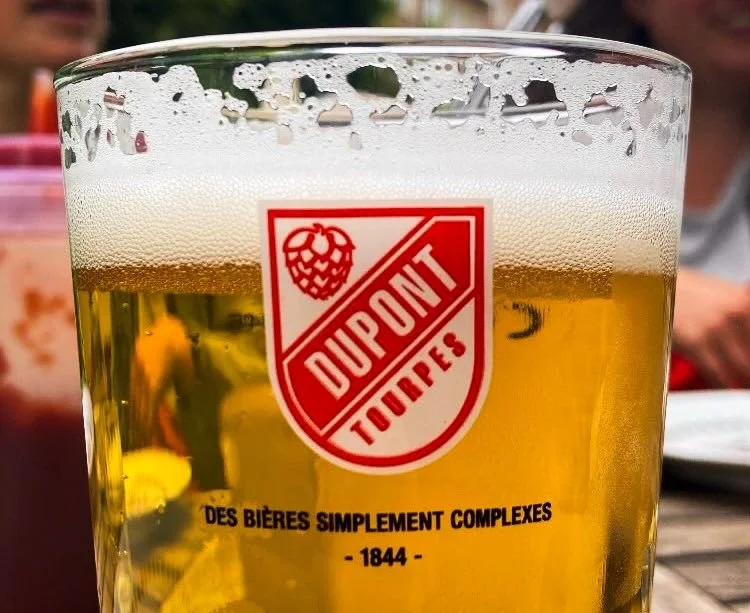They don’t want Belgian beer to change – and that’s their problem*
*Or, a (semi-serious) rebuttal of Boak and Bailey’s “We don’t want Belgian beer to change – and that’s our problem”
Picture this: it’s 1925, and you’re a young English man of means stepping off the train at Gare du Midi for a weekend enjoying what Brussels has to offer. You fancy yourself a bit of a beer connoisseur; maybe you remember fondly a rowdy, beer-fuelled trip on the ferry to Oostende before the war, you’ve heard the stories second hand from the demobbed Tommies of your village about the wonders of Belgian beer, or perhaps you have an uncle from Burton who’s in the business. You’ve certainly read your Georges Lacambre, and maybe you even had a brief subscription to the Petit journal du brasseur. You can wait to dive into Brussels’ backstreets in search of the atmospheric estaminets you’ve read all about in your Camille Lemmonnier books, on the hunt for all the beers you’ve read about from a distance - Uitzet and Dubbel Uitzet, Peeterman, Hoegaardse Witbier, Biere de Diest, Brown beer, and of course the king of Low Countries beers, Lambic. You’ve even heard that, recently, they’ve begun bottling Lambics into something fresher and more effervescent.
Imagine, then, your horror, as you stroll down the Zuidstraat in search of your first drink of authentic Belgian beer only to be confronted with café facades plastered with advertisements for brands and beer styles with which you are already intimately familiar. Whitbread. Bass. Campbell’s. And those idiosyncratic, Belgian beers you were so looking forward to have been usurped by invasive Bocks, Exports, Stouts and Pale Ales. Even the eccentric alleyway estaminets which you so longed to inveigle your way into have been superseded by expansive mirror palaces and exuberant beer halls. Bewildered by the discontinuity between your expectations of the Belgian beer scene and its lived reality, you withdraw to the comforts of an old-style establishment off the Grand Place for a restorative - and reliable - tumbler of fresh Lambic.
Our fictitious traveller might find themselves appalled at the degree to which a historically rich beer culture has submitted itself to the domination of foreign beer styles with no historical connection to the country. He might have feared for the future of Belgium’s indigenous beer styles in the face of these globalising, cannibalising brewing cultures, wondering how Belgian Belgian beer might be in 10 or 20 years time. He’d be partially proved right; Peetermans and Uitzets haven’t been seen in a long time. However, he wasn’t to know that this influx of foreign influence, so all-consuming and overwhelming in the aftermath of WWI, would settle down and ultimately be consumed in part by the very traditions he feared were in danger - prompting along the way some of the all-time classic Belgian beers with which we are still familiar today: Chimay Bleue, Westmalle Tripel, and Duvel.
Punctuated Equlibrium
Two of the above beers were referenced in an article published this morning by Boak and Bailey entitled “We don’t want Belgian beer to change – and that’s our problem”. In it they lament, for a number of reasons, the infiltration of global craft beer into Belgian beer culture. In particular they contrast Westmalle and Duvel - “some of the world’s greatest and most innovative beers” - with the American-influenced output of the country’s contemporary brewers (IPAs and the like), which they worry is unmoored to an important degree from Belgian traditions. You should read the polemic in full, but the general thrust of it is that whereas American and British beer were ripe for revolution by the end of the 1990s, Belgian beer had weathered the 20th century better and “didn’t need saving” with canned IPAs and pastry stouts. As they put it:
“What do their brewers suppose they’re saving us from? Having to drink another Rocherfort 10, which is better and richer than any pastry stout that’s ever existed, maybe? Oh no, please don’t force another €4.50 Saison Dupont on us!”
I don’t disagree that Belgium has one of the richest and most diverse beer cultures in Europe, and it is a small miracle that so many idiosyncratic beer traditions managed to survive the tumultuous 20th century - more tumultuous here in Belgium than they maybe allow for. But it was their proposition that Belgian beer culture is defined by evolution not revolution that prompted my little piece of anachronistic time travel above. It is true that Belgian brewers - to borrow an idea I first stole from fellow Belgophile Joe Stange - are past masters at co-opting and finetuning wider brewing trends to make them palatable in Belgium. My contention is, however, that the history of Belgian beer is more of a Hegelian dialectic, a process of thesis-antithesis-synthesis evidenced less by evolution that by periods of stability punctuated by significant, discombobulating ruptures.
Hegel’s revenge
If you hadn’t already guessed, I would suggest the last great rupture took place in the 1920s and 1930s, when Belgium’s artisanal traditions (thesis) were confronted by Anglo-German influenced industrialisation (antithesis) and the result was the emergence or codification of the Belgian beer styles we’re most familiar with today (synthesis). You could argue that there were smaller ruptures across the rest of the of 20th century, for example the resurgence of traditional, small-scale brewing in the 1980s (antithesis) in opposition to the dominance of industrial Lager (thesis) which brought about the explosion of the speciaalbier market (synthesis) - your Chouffes, your Omers, your Cornets.
But I think it’s fair to say that we are currently in probably the most disruptive period for Belgian beer since Whitbread and Bass dominated the scene. So what’s the thesis-antithesis-synthesis that’s prompted the current rupture? Contrary to Boak and Bailey’s assertion, people may in fact have become bored with Belgium’s beer canon by the mid-2000s, dominated as it was by what were perceived to be a uniform cadre of strong and sweet beers (thesis). Young people in particular, as is their wont, were susceptible to heterodox ideas about what a beer could be, and in the international craft beer movement they found their antithesis antithesis to the establishment: hoppy, bitter, sour, and strong too but in different ways, locally-made by people you knew.
The immediate pre-Covid years were probably the peak of this heterodoxy, and in the years since we’re just getting a sense of what the synthesis might be. In the meantime, we’re left with a confused, and confusing market, frequently featuring bleeding edge craft IPAs and pastry stouts of dubious quality on supermarket shelves alongside equally-dubious efforts by the establishment breweries to co-opt some of the ideas of their younger upstarts. But as with our hypothetical time traveller, it’s hard to see how exactly the rupture will resolve itself when you’re right in the middle of it. Time is a great filter, and it remains to be seen if Belgian brewers have indeed saved us from something or doomed us to a lesser experience of global homogeneity. But for now, if it’s hard for us locals to navigate the scene, it’s understandable if visitors have a hard time reading what’s going on.
We’re in the synthesis now
Another target Boak and Bailey lined up in their sights was the contemporary craft beer bar, of the type they themselves coined the term ‘craftonia’ to describe: “...we simply cannot get excited about places that feel as if they could be picked up and dropped into Berlin or Milan without anyone noticing.”
Aside from the fact that some of these craft beer bars might be catering to people - provincials, you might call them - who can afford to spend money on expensive English IPAs but can’t afford to fly to Berlin to experience some cosmopolitan glamour, I would have to agree that the traditional belgian beer bar is a superior species. In this, the synthesis has already established itself, in the guise of old brown cafés run by enlightened landlords stocking IPAs, Imperial Stouts and other nouvelle vague beers alongside the old reliables - places like Le Coq or Les Brasseurs in Brussels. But I will say this: in the Belgian beer ecosystem, the cold overly-lit craft beer bar serves the same function as a contemporary art gallery might do in the art scene. The cities with the best cultural scenes are the ones where you can - like at Brussels' Royal Museums of Fine Arts - spend hours browning the Rubens and Flemish primitives in the company of tourists, and just as easily visit the latest new exhibition in an uptown white cube from some unknown-to-you international artist.
The former, being that it represents the canon, has the imprimatur of establishment acceptance. You know what you’re going to get, and what you’re going to get is excellence, and a representative sample of Belgian culture. In the latter, there is no guarantee of excellence - who knows which contemporary artist will rise to the level of the canon - and no promise of a deeper connection with Belgium. In fact, a rupture with the contemporary culture may be the point. But you’re going to experience something new and invigorating, and while it may be avant-garde and by definition not for everyone, with any luck some of the vigour will leak into the wider culture and be absorbed - synthesised - into something new.
But you need both, so that your culture remains health, so that it isn’t suspended for all time in aspic, a Potemkin Disneyland catered to and enjoyed only by daytrippers and out-of-towners looking for their authentic Belgian experience.
Read the original Boak and Bailey article here.

